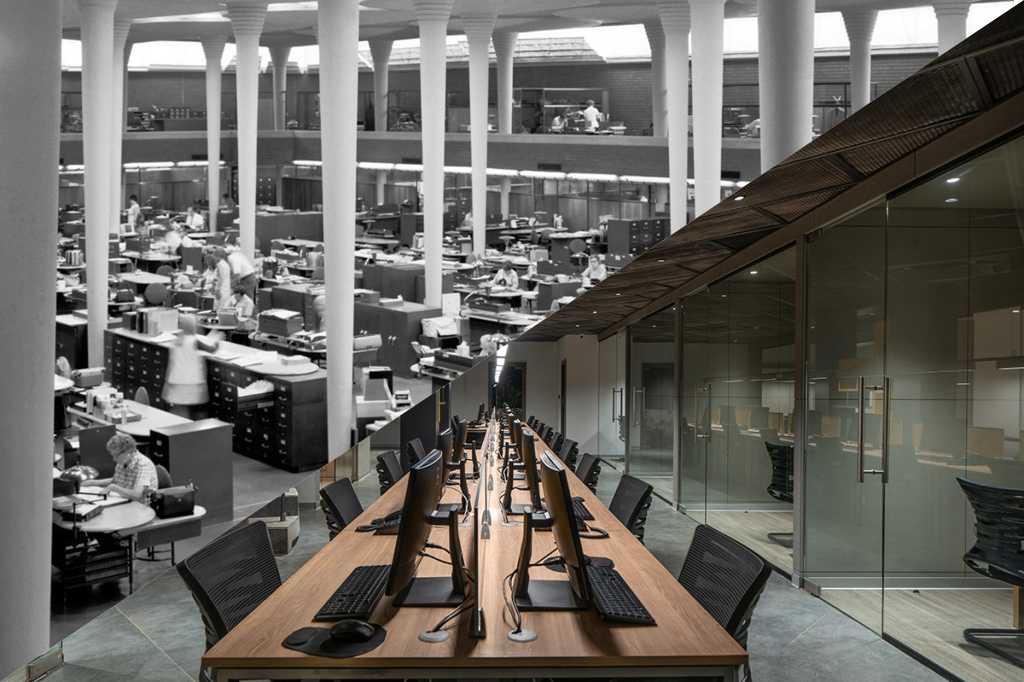
How Have Office Space Interiors Evolved Over The Years?
An essential process that quickens growth and development is ‘evolution’. While evolution is a choice, change cannot be avoided. The evolution of office space interior design is mirrored by societal, technological, and cultural shifts. This suggests that workplaces are fair indicators of the condition of human society’s development and that changes in them reflect the ongoing improvements in a professional’s productivity and well-being. The contrasts are more obvious when two decades are compared side by side, such as the 1960s and the present decade.
In the decades before the computer revolution, each desk was equipped with a large desktop monitor. This era evokes the feeling of cubicles and a practical vibe. Thanks to increased work flexibility, employees may now work when, where, and how they choose. Due to this development, today’s workplaces enable staff to remain productive while still showcasing their own characteristics.
Check out the changes millennials are incorporating into this era:
Casual Work Corners:
There was a revolution toward casualness. Casual workplaces were developed to encourage individuality. These spaces were created to support employees’ long hours analyzing data, creating visuals, and doing other duties. The staff’s dress has also become more relaxed. Therefore, the new dress code has to be reflected in workplace architecture and its casualness. It can be playful or in monotones. Whatever the situation, the office interior should reflect the causal mood or vibe.
Natural Resources:
Over the past decade, exposed brick walls and wood floors have become common in offices. This deviation from functional materials gave an office personality and charm while creating a comfortable working environment. Now office furniture incorporates recyclable materials made of bamboo, rattan, hemp, organic cotton, etc.
Homey Appearances:
The Internet has completely changed how professionals operate with faster connections, thinner PCs, and more potent mobile devices. Modern employees may perform tasks from almost anywhere, even at home, in this decade. Thus, office interior design takes on a cozier, more “homey” aspect in this situation. Couches, bean bags, soft chairs, and even beds are now being included in modern office furniture. Additionally, lighter colors and warm lighting are becoming increasingly popular.
Breakout Lounges:
The importance of employee communication and collaboration has increased, and workplace structures now have the finest office interior design to support it. Modern office interior designs that include hubs and lounges promote individual and group interaction. Breakout zones are designated areas where staff members may mingle and unwind while enjoying recreational pursuits like video games, pool tables, and other forms of entertainment.
Ergonomic furniture:
Businesses are starting to improve employee well-being by taking a more proactive approach. By selecting the best office interior design, many firms are now purchasing ergonomically built furniture with a strong focus on comfort and health. Organizations that value creative collaboration makes their interiors brightly illuminated using natural light sources. Chairs, desks, and accessories are used in offices to match the posture and comfort of an employee. That’s how companies are bringing about changes for employee well-being and health.


No Comments